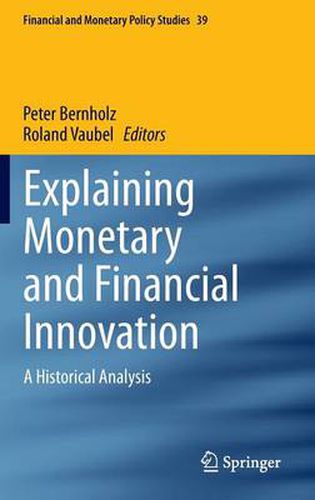Readings Newsletter
Become a Readings Member to make your shopping experience even easier.
Sign in or sign up for free!
You’re not far away from qualifying for FREE standard shipping within Australia
You’ve qualified for FREE standard shipping within Australia
The cart is loading…






This title is printed to order. This book may have been self-published. If so, we cannot guarantee the quality of the content. In the main most books will have gone through the editing process however some may not. We therefore suggest that you be aware of this before ordering this book. If in doubt check either the author or publisher’s details as we are unable to accept any returns unless they are faulty. Please contact us if you have any questions.
This book discusses theories of monetary and financial innovation and applies them to key monetary and financial innovations in history - starting with the use of silver bars in Mesopotamia and ending with the emergence of the Eurodollar market in London. The key monetary innovations are coinage (Asia minor, China, India), the payment of interest on loans, the bill of exchange and deposit banking (Venice, Antwerp, Amsterdam, London). The main financial innovation is the emergence of bond markets (also starting in Venice). Episodes of innovation are contrasted with relatively stagnant environments (the Persian Empire, the Roman Empire, the Spanish Empire). The comparisons suggest that small, open and competing jurisdictions have been more innovative than large empires - as has been suggested by David Hume in 1742.
$9.00 standard shipping within Australia
FREE standard shipping within Australia for orders over $100.00
Express & International shipping calculated at checkout
This title is printed to order. This book may have been self-published. If so, we cannot guarantee the quality of the content. In the main most books will have gone through the editing process however some may not. We therefore suggest that you be aware of this before ordering this book. If in doubt check either the author or publisher’s details as we are unable to accept any returns unless they are faulty. Please contact us if you have any questions.
This book discusses theories of monetary and financial innovation and applies them to key monetary and financial innovations in history - starting with the use of silver bars in Mesopotamia and ending with the emergence of the Eurodollar market in London. The key monetary innovations are coinage (Asia minor, China, India), the payment of interest on loans, the bill of exchange and deposit banking (Venice, Antwerp, Amsterdam, London). The main financial innovation is the emergence of bond markets (also starting in Venice). Episodes of innovation are contrasted with relatively stagnant environments (the Persian Empire, the Roman Empire, the Spanish Empire). The comparisons suggest that small, open and competing jurisdictions have been more innovative than large empires - as has been suggested by David Hume in 1742.